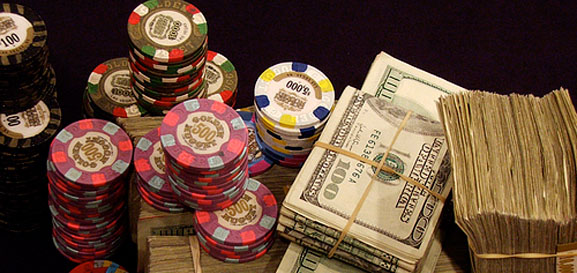We like to cover some basic poker fundamentals just to keep you on your toes and refreshed. A lot of advanced poker players think that they are above this type of stuff, but it affects every single hand that they play. For the beginner, these topics represent even more information that is useful for growing even better in poker. You don’t have to feel like you need to be a poker rockstar overnight. You can always study theses and feel them out on your own time. Many super players like Phil Hellmuth and Phil Ivey have been playing for years and years and years. If it’s taken them to become downright masterful with poker, then it’s obvious that you need to make sure that you give yourself enough time to learn poker.
So let’s dig in and talk about implied odds. A lot of people start with implied odds but they need to actually understand pot odds.
Where do pot odds come into play? With every hand, of course. Let’s say that you are on the flop with a great flush draw. You’ve got two spades in hand, and lucky you, there’s another two on the table now. Yet somebody else has spotted the same bit of good luck, and they’ve decided to bet. Now, they could be betting for the sake of sake, or they could have a real monster on their hands — and that kills your dream of putting more money in your bankroll at the end of the day.
So if you’re going to figure it out, you need to turn to pot odds, which can help you decide if you want to call, fold, or even raise.
It’s all about profitability based on the cards that you have as well as what’s on the table and even what other people are doing.
Pot odds can be used to make you money, because you will start looking at your options. In all honesty, this is the difference between a newbie who just plays by chance, and a skilled pro. You can bet that any of the WSOP darlings that are making headlines have a firm understanding of pot odds. Make sure that you do the same. It doesn’t really take very long to figure things out anyway.

To work out pot odds with a flush or straight draw, you basically want to look at how likely it is that you will make the flush or straight — or anything else you want to score. From there, you have to compare the size of the bet that you are facing with the size of the pot. It’s simple math from then on out.
OK, so it’s back to math time, right? Right. You need to look at how many cards you haven’t seen, and then figure out how many of those mysterious cards could make the draw (or straight) and which ones can’t do it at all. You put those numbers together and get a good and useful ratio.
Example time? Absolutely.
Say that your hand is actually As 4s, and the flop comes down Ks 9s 5d. You’re probably getting rather excited, since this gives you two chances to get what you want.
As everyone knows, there’s 52 cards in a pack, with 13 spades total. There’s 2 in the hand, and 2 on the flop. Don’t try to assume who has the other spades for hole cards. Simple math tells us that there are 9s’s remaining in the deck.
So there are 47 cards that we absolutely don’t know about. You take the total # of cards and subtract out the cards that you know about (your 2 cards and the 3 on the flop). [Read more…] about A Return to Implied Odds